Starcraft 2: Protoss Strategy Guide for Rush Tactics
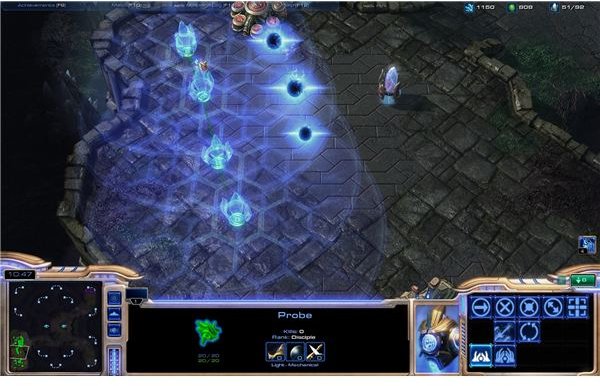
Why Should You Choose Protoss?
Starcraft II offers a great variety of strategies and tactics which one can employ to defeat their enemies. Although the game only has three races, each of these has unique units, strengths and weaknesses. If you like commanding low numbers of powerful units, then Protoss is the race for you.
Strengths and Weaknesses
-
Their units are expensive, powerful and will require a longer time to create compared to other races.
-
Their mid and late game is split into three different tech paths, each with advantages and disadvantages. Switching between these paths is time-consuming and expensive, so choosing which one you use is very important.
-
They have “plasma shields” which automatically regenerate when out of combat. For a Protoss unit to take life damage, they must first run out of shield points.
-
They are very dependent on upgrades and research.
-
Their buildings warp in (build) by themselves. A probe (worker) is required to start the warp, after which the probe is free to perform other tasks.
-
Buildings must be built on energy grids generated by pylons (except for Nexuses and Pylons)
Scouting
Scouting is very important in Starcraft II. Without knowing what the enemy is up to, you will not be able to correctly counter their army and you end up on the losing side of the game. As Protoss are rather slow at adapting to enemy tech switches, they need to scout earlier in the game. The early scout should be your 9th probe. Later on, you can use a phoenix hallucination (if you researched the ability from the cybernetics core), or observers. Dark templars are also good scouts but remember not to engage the enemy unless they have no detection abilities.
By the time your scout arrives, the enemy should already be building their first unit production facility. If you see none, expect a proxy rush, so begin scouting around your starting location and natural expansion. If you see double gas, expect a rush with high-tech units: a Protoss going for double gas early in the game is likely to do a dark templar rush, Terrans will opt for a banshee rush in case of double gas, and Zergs usually don’t start with double gas, but if they do, expect mutalisk harassment.
Terrans with no gas will probably go for a marine rush. Zergs with only 5 workers will attempt to perform a 6-pool rush (very early military units when you will have none, use your workers with attack move to counter).
General Purpose Tricks and Tips
Here are a few general things to keep in mind.
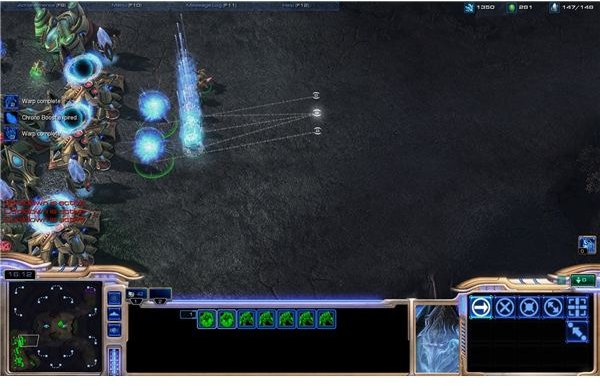
- Have at least 2-3 photon cannons in your mineral lines, to prevent drops or other types of harassment.
- When facing Zerg players, it is best to wall off, either around your Nexus or at the ramp.
- Have photon cannons spread around your base to defend against invisible units and enemy scouting parties/drops.
- Make sure your buildings are powered by more than one pylon. A building with no power will stop working. Sniping pylons to delay unit production is a very popular tactic.
- Regardless of which tech path you choose, you should build a Robotics Facility to get observers.
- Research your weapon and armor upgrades. Protoss units scale very well with both.
- Always research the Warp Gate ability. It will allow your gateways to create units anywhere you have pylon energy grids
Build Orders

The build orders presented here will be split into three categories. Rush tactics, macro (longer games) and cheese (unorthodox tactics).
The numbers in front of a structure or unit represent the supply at which you should start building said unit or structure, assuming you maintain constant probe production.
4 Gates Rush
The 4 gates opener is probably the core of Protoss play style. It does not necessarily have to be a rush, as this build order is very common in almost all Protoss openers, apart from cheeses, as it provides a prett
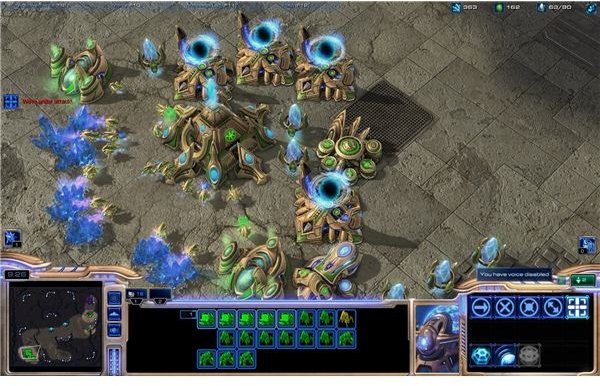
y effective way of building up the numbers of your army. Every single player should know how to execute the first part of this build.
- 9 - Pylon
- 12 - First gateway
- 13 - First assimilator (gas)
- 16 - Second pylon
- * 16 - Zealot if playing Zerg, save for the Stalker if not
- 18 - Cybernetics core; research warp gate as soon as the cybernetics core is done.
- 18/19 - Second assimilator
- 20 - Stalker or zealot, depending on enemy race
- 22-26 - The other three gateways
- At around 27-30 you should have warp gate research ready. Warp in your first set of 4 units, and move them across the map, along with a probe, near the enemy base, where you should build a pylon. During this time, warp in another set of 4 units and send them to rendezvous with the other group. When the pylon is done, warp in another 1-2 groups of units and attack the enemy base. Don’t forget to constantly send reinforcements.
Proxy Two Gates Rush
This tactic involves building two gateways somewhere close to the opponent’s base, preferably in his natural, and then training zealots in large numbers to attack the enemy base. It is very potent against Terrans and decent against Protoss, but against Zerg it leaves you exposed to counter attacks, so be careful.
- 9 - Pylon in your base
- 10 - Pylon in the enemy natural (or when you find the enemy base)
- When the pylon is done, lay down two gateways in the enemy natural
- When gateways are done, start chrono-boosting zealots. When you have around 4, attack the enemy base, while constantly training more.
The Void Ray Rush
This involves attacking the enemy very early with 6-7 void rays. It is powerful against protoss and zerg, but weak against terrans, as marines are very good at killing void rays.
- 9 - Pylon
- 12 - First gateway
- 13 - First assimilator (gas)
- 16 - Second pylon
- * 16 - Zealot if playing Zerg, save for the Stalker if not
- 18 - Cybernetics Core
- 19 - Second assimilator
- 22 or when cybernetic core is done - Stargate
- 24-26 - Start training void rays
- If you have enough resources, make a second Stargate and start building more void rays
- When you have around 6 void rays (that should be at the 8 minute mark), attack the enemy base. Don’t forget void rays require 3 supplies each, so build pylons and don’t get supply blocked.
The Dark Templar Rush
This involves hitting the enemy base with 3+ dark templars around the 7 minute mark. It is very potent against anyone who has no detection.
- 9 - Pylon
- 12 - Gateway
- 13 - Two assimilators
- 16 - Zealot
- 17 - Cybernetics core. Research warp gate as soon as cybernetics core is done
- 19 - Twilight council
- When twilight council is done, lay down the dark shine, somewhere hidden, and another 2 gateways
- By the time the dark shrine is done, you should have warp gate done, three gateways and enough resources for three dark templars. Warp them in and send them to the enemy base.
- When you have 200 gas, research charge
- Should the rush fail, send in large numbers of zealots.
Macro Tactics
Protoss units are very expensive but also very powerful. Usually, when two 200 supply armies clash, it is the protoss one that wins. So if you don’t want to rush the enemy, you should consider building up your mighty army. Most macro tactics involve expanding sooner or later, as gathering from several places at once grants a pretty powerful economy which is capable of sustaining high unit production rates.
The 16 Nexus Fast Expand
The 16 nexus is pretty straight forward. You simply keep building probes until you have enough resources to build a new nexus, which will be at around 16 supply. That’s right, you only build a pylon at 9, and then you keep building probes. After that, you simply go on with a typical
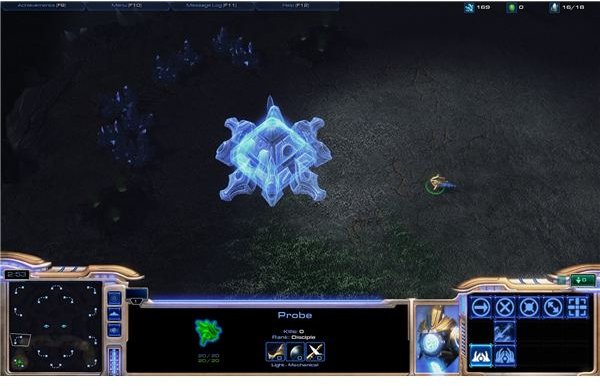
4 gates build. Once you have the second nexus up, simply start building probes and saturate both of your expansions. From now on, you can freely choose which tech you want to follow. You can even use two at once, as the resource income will be more than enough. You can turn the 4-gates build into 8-gates or even tech up for carriers. This build is very effective against Terran players, they will have no unit to stop you from expanding, even if they scout you. It is decent against Protoss players, but will fall against any 4-gates push. Doing it against Zerg is rather risky, as they can easily rush you with zerglings and take out your nexus at the natural.
Forge Fast Expand
The forge fast expand is also very easy to perform. Once you have the pylon and enough resources, build a forge and then keep building probes until you have enough resources to build a new nexus. Lay down the nexus at your natural, along with a pylon. When the pylon is done, build a couple photon cannons. Also remember to put photon cannons in your main base. From there on, you can do whatever your heart desires. You can go on with classic 4-8 gates or go for other, more advanced tech trees. The build is very effective against early rushes, as the photon cannons backed up by probes are pretty effective at holding back almost everything the enemy can throw at you. It is an overall safe build against all three races.
3 Gates Fast Expand
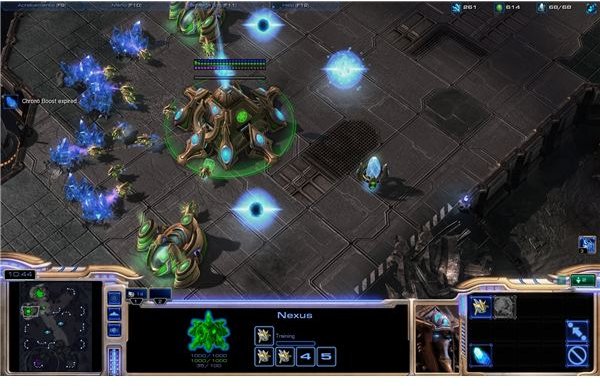
3 gates fast expand is akin to the 4 gates rush. You need to follow the 4-gates build order, but only build 3 gates, after which you build the nexus. This is an aggressive build. By the time you start building the nexus, the enemy will be able to stop you if he decides to attack. So instead of waiting for him to come to you, you go to him. With the units you get from the three gates, start harassing the enemy base, to prevent him from finding your nexus. Don’t be too aggressive with your army. The 3 gates will not be able to provide a push as powerful as the 4 gates rush, so you have to be very careful about losing units. Performing hit and run tactics is best in this scenario. Once the nexus is done, retreat and start building up your economy. From there on, you can either go for 6-8 gates or tech to colossi/void rays/carriers.
Cheese Tactics
The term “cheese” (not the food) is used to describe unorthodox tactics. The most infamous Protoss cheese is the photon cannon rush, which involves building photon cannons in the enemy base. This tactic is very effective against Protoss and Terran players and can be used to contain Zergs, prevent them from expanding and eventually starve them of resources.
The build order is rather simple. If you play on a large map, send one of your starting probes to scout. By the time you build your first pylon, you should be aware of the whereabouts of the enemy base. When the pylon is done, build a forge and another pylon in the enemy base. When the forge is done, build a cannon in your base and another one right near the pylon in the enemy base. When the cannon in the enemy base is done, build another in the attacking range of the first, so the enemy can’t shut it down using workers. Continue down this path until you reach the enemy Nexus/Command Center/Hatchery.
One mistake cannon rushers do is that they forget to build up their economy. 12-13 probes can sustain your cannon rush, but if it fails, you will be at a horrible disadvantage. While you build cannons in the enemy base, don’t forget to keep building up your economy and army. Cannon rushes covering a proxy 2 gate rush are pretty effective. The enemy will find itself overrun by zealots from one side and pressured by cannons on the other.
How to Deal with Enemy Early Rushes
Rushes are annoying sometimes, especially when you are the one being rushed. Usually, executing a rush is a lot easier than fending it off. The list bellow explains how to stop most enemy rushes. The key to countering a rush is to scout the opponent while he prepares for the rush, so you can react to his unit compositions.
- 6 pools and all its brothers and sisters (the 7, 8, 9 and 10 pools rushes) are probably the trickiest rushes to defend against as a new player. The key here is to use your workers with attack move. The attack move will instruct units to attack any enemy unit they come across while moving to a specific position on the map. Ordering your probes to attack move somewhere behind the enemy zerglings will be enough to do the trick.
- MM rush: MM stands for Marine-Marauder and is a very popular tactic Terrans use against Protoss players, as the Protoss guy needs a lot of micromanagement to defend against this. The key unit here is the sentry. Their forcefield ability is very potent at blocking the ramp and preventing the enemy from invading your base while you build up your forces. Forcefields can also be used to block enemy movement, prevent kiting, retreats or reinforcements.
- 4 gates rush: The Protoss vs Protoss matchup is plagued by this tactic. A Protoss has two ways of responding to a 4-gates rush. You can either perform a defensive 4-gate, or go 3-gates-robo. The build order for 3-gates-robo is similar to that of the 4 gates, only that instead of the 4th gate, you build a robotic facility and start building immortals, which are extremely powerful against stalkers. See more later on in this article.
- The dark templar or banshee rush: These are very easy to counter by building either a photon cannon at the ramp or in the mineral line, or by using observers.
Best Unit Combinations
Stalker, zealot and sentry combinations will be very effective early in the game with decent micromanagement and represent the backbone of any Protoss army. Once charge and blink are researched, this combination becomes very powerful, especially against Terrans, who rely a lot on range and kiting to inflict damage. It is countered by massed roaches, and most late-game units such as archons, thors, ultralisks and colossi.
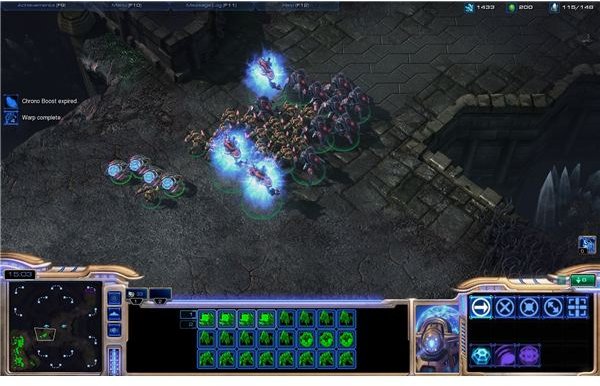
Adding void rays and archons or colossi to the above combo creates the dreaded Protoss death ball. It will counter most unit combinations other races can throw at it, but it still has its counters. Terrans can use thors with ghosts (EMP drains Protoss shields) and Zergs can use their own death ball, the zergling-infestor-brood lord combination. Fungal growth (infestor ability) freezes your units while dealing massive damage and neural parasite (infestor ability) can mind control your archons or colossi, turning them against you.
Zealots and archons are another viable option in all three matchups. Both units are very resilient and capable of inflicting high damage to their targets. High templars are best used to merge archons, as they only cost 50 minerals, so they will not hinder your ability to create zealots. Archons compensate for the zealot’s inability to attack air units and they will obliterate clusters of ranged units, as their high movement speed and immunity to snares makes them very difficult to stop.
Phoenixes and void rays are probably the best air unit combination in this game. Phoenix are excellent at taking out everything that counter the void rays, while void rays can focus on taking out ground targets. Adding carriers to the mix will provide additional firepower and their long-range makes attacks against fortified positions a lot easier.
Harassments
In light of the new 1.4 game patch, the warp prism got a shield increase to 100 (up from 40), thus opening a lot of harassments opportunities for Protoss players. There are three things a Protoss player needs to do before they can do effective harassments.
- Research the Warp Gate tech
- Research Gravitic Drive tech (speed boost for warp prism at the Robotics Support Bay)
- Choose units with high DPS, such as high templars (with Psionic Storm), archons, zealots, stalkers, etc.
The new warp prism opens up two types of harassments. One type would be when you simply sacrifice your units for damage, best done with zealots. Load 4 in the prism, find vulnerable enemy mineral lines, unload, shift the prism into Phase Mode, and warp in additional zealots. Around 8 of them can deal quite a lot of damage.
High templars can be used to throw a couple of Storms and kill a lot of workers. Archons also deal insane damage to mining operations, and can even take on small groups of biological units, forcing the enemy to move their entire force to defend against the attack.
MMM+G Bioball Push
A popular tactic Terran players use against Protoss is the MMM bioball. The difference between this push and the early MM rush is that marines and marauders are now accompanied by medivacs and they now have all the special abilities (stim, combat shields and concussive shells) researched, and probably 1 or 2 levels of weapon and armor upgrades. Obviously, this combo has a lot of firepower. However, it has quite a lot of counters in the Protoss army. Colossi, High Templars and Archons all make short work of large groups of clamped up units. This is where the G comes in. That G comes from Ghost. Ghosts, with their EMP Round ability make short work of High Templars and severely damage Archons. So we are left with Colossi, but if the Terran has a few Vikings (which he will since he already has Starports with reactors), this Terran army becomes unstoppable. So what is a Protoss going to do about it?
The answer lies in a combination between sentries, zealots, stalkers and archons or colossi. Although EMP does a lot of damage to Archons, Terrans need to EMP an archon three times to completely destroy it. Due to their high hit points, extra armor and high damage, zealots make perfect units to have against this combination. Add charge and guardian shield from sentries on top of that, and they become monsters in a melee fight, countering both marines and marauders. Be careful when positioning the sentries. Make sure they are not clumped up, so that the Terran will need more than 1 EMP to take away their energy. The recent radius decrease for EMP makes this a lot easier for Protoss players.
1-1-1 Push
Another powerful tactic Terrans can use against Protoss is the 1-1-1 build. There are several issues with this build, for Protoss players.
First, it is very difficult to scout. The early scout is killed or driven out of the Terran’s base way too soon to gather conclusive evidence pointing towards a potential 1-1-1 push. Basically, you’re left in the dark for a few minutes (until hallucination or the Robotics Facility can provide better scouts), and in this time, the Terran can do anything he wants: he can FE, gather up an army with unknown composition, prepare for some drops, etc.
Second, the units in this composition compensate very well for each other’s weaknesses. Typically, an army will be composed of several (20+) marines, a couple of SCV to repair mechanical units, a few siege tanks (sometimes 2, maybe even 3), few or no marauders, and a raven or a couple of banshees.
As you can see, there are two variations of this build (as if scouting problems were not enough); the banshee 1-1-1 and the raven 1-1-1. The raven 1-1-1 is easier to defend against. The whole purpose of the raven is to use their point-defense-drone ability, which nullifies projectile based attacks at the cost of energy. This will make your stalkers useless untill the drone is gone. A good combination to use here is zealot/archon. The raven thus becomes useless, since you won’t be using any projectile based attacks. You can also use sentries to focus down the drones so that you can use your stalkers.
The banshee 1-1-1 is much more complicated to hold out against. The banshees will probably have cloak, and they can harass your mineral lines or even the main army at will. You have to ways of dealing with pesky banshees: either through observers or photon cannons. But here comes the issue with this build. If you go for observers, you won’t have enough time to get your archons. This means you will have to rely on immortals. This is bad. No offence to the immortals, they are great units, but the marine mass will make short work of them, leaving you defenseless against tanks. If you choose to defend your mineral lines with cannons and go for archons, you will be at a disadvantage on the battlefield. So what do we do now?
Dealing with this requires outside the box thinking. Protoss players have come up with several ingenious ways of dealing with this rush:
- 2 gate-stargate: This build gives you phoenix. They make short work of banshees, and can lift up tanks, greatly increasing your chance at holding back the push. The problem is that you will have no detection
- Mothership rush: Getting an expansion early on in the game (16 nexus build) gives you enough economic power to make motherships. Its cloaking field will keep your units alive longer, the vortex ability will buy you some time to get more units and adapt to the enemy army composition
- Blink stalkers: This relies a lot on a terrain advantage. Blinking up and down hills and performing hit and run tactics to thin out the Terran army works wonders.
- Dark Templars: No raven-No detection. Besides, the Terran will use his Orbital Command energy on MULEs to make up for workers in the field, so he won’t have enough for scans either.
Keep in mind that you must have at least two bases by the time this push hits. If you do not, the Terran will have the economic advantage over you due to MULEs, and he will simply be able to replenish his army and attack again.
Images

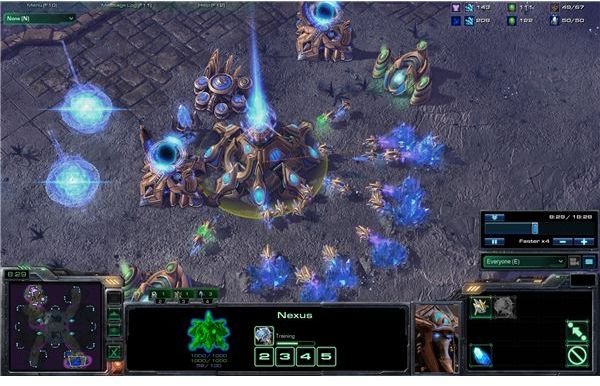
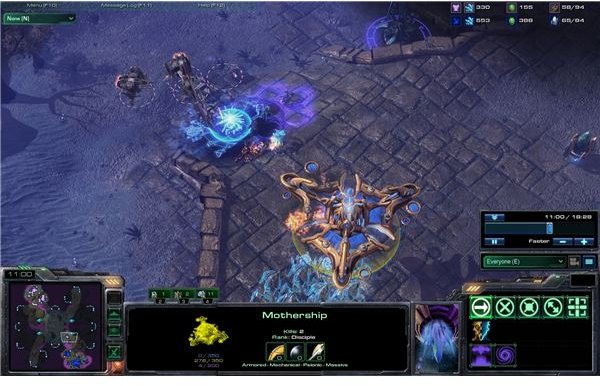
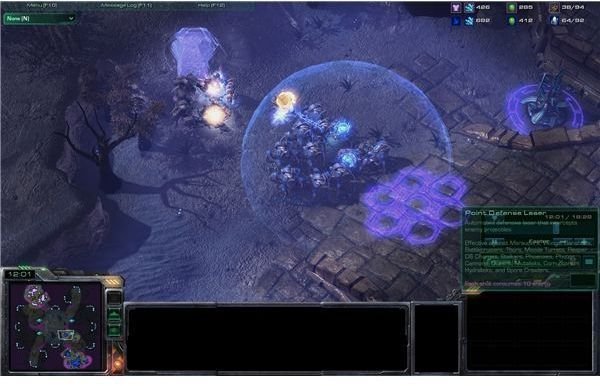
The Mass Mutalisk Build
A lot of Protoss players find it difficult to handle mass mutalisks. In large flocks, mutalisks can be deadly, they provide awesome map control, your ground units can be kited to the graveyard and back, your economy will be harassed, and when you expect it least, a large herd of blood-thirsty zerglings will run rampart in your base. So, how do we stop this?
First of all, we have to scout this build. When it is obvious that the Zerg will attempt to produce mutalisks, you will have to start building a Stargate and create phoenixes as soon as possible. In addition to this, build photon cannons in your mineral lines and in sensitive locations around your base.
The Zerg will usually get 7 to 10 mutalisks and attack your mineral lines. 5 phoenixes will make short work of them, with few if any losses. Once you have held off the initial push, use your remaining phoenix to harass the Zerg base. Keep sniping queens and overlords. Each kill is a blow to their powerful economy.
If they simply stay in their base and mass mutalisks, when you have around 10 phoenixes, go pay them a visit and thin the flock a little.
Meanwhile, on the ground, you should be massing archons and zealots. Archons are awesome mutalisk killers. When you have enough, attack the Zerg. The Zerg will be forced to engage your ground army with the mutalisk cloud. When they do that, it’s game over for them. The whole point here is to cause the confrontation. If you leave the Zerg player to their own devices, they will simply take control of the entire map and you will eventually be starved of resources, and you won’t be able to hold out against the harassments forever. Mutalisks are good harassment units, but they are pretty bad at direct combat.
As a side note, you may have noticed that mutalisks have a bounce attack. Each time a mutalisk attacks, it will hit a grand total of three targets. The first target will take full damage from the attack minus armor. The second and third ones will be hit by 2/3 and 1/3 of the initial attack’s damage before upgrades. Which means the 3rd bounce will deal very little damage. Upgrading your air armor first will make your phoenix a lot more resilient, because the 1 extra armor nullifies the 3rd bounce.
Another interesting thing about the phoenix is its ability to attack on the run. They don’t have to stop moving to attack their targets. This makes them potent harassment units against Zerg. With their superior agility, phoenixes can kill overlords and perform hit and run attacks while avoiding enemy air defences. They are also very good scouts, good map control units, and can provide support for ground units by lifting up dangerous enemy units such as infestors. With decent micromanagement, they can inflict quite a lot of damage and even win you the game by killing all of your opponent’s overlords.
Images
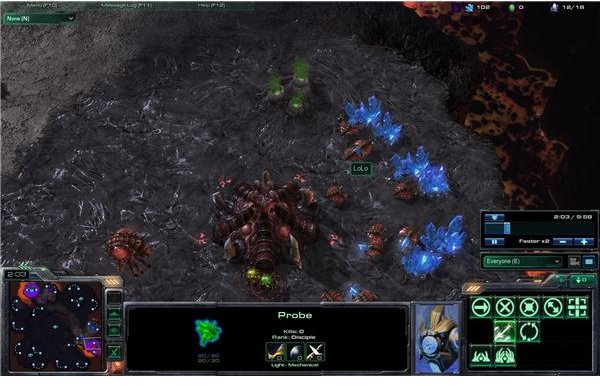
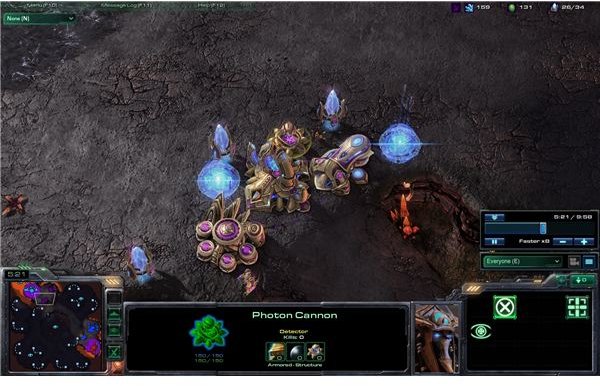
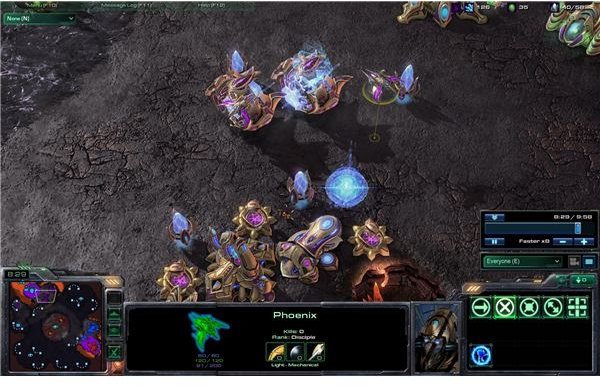
Zergling-Infestor-Brood Lords
A very solid unit composition, this build will obliterate you if you are not paying attention and do not prepare accordingly. Usually, the Zerg preparing this composition will turtle with a lot of spine crawlers (to stop your early rush attempts with ground units) and will expand all over the map and slow tech up to brood lords. You have to prevent him from doing that. The obvious counter here is the void ray. They obliterate spine crawlers, kill overlords in a matter of seconds, quickly snipe enemy tech buildings, and when massed, they can even take out groups of hydralisks and queens.
If you fail to pressure the Zerg, retreat and play the macro game. Get a healthy combination of phoenixes and void rays, a couple of archons and large numbers of zealots. The brood lords are your main problem here. They spawn large numbers of broodlings, which hinder the mobility of ground units. The phoenix-void ray combo makes short work of any air army protecting the brood lords, which will die in no time due to their low movement speed and inability to attack air targets. Once the brood lords are gone, use the phoenix to lift up infestors and other dangerous zerg units. The zealots and archons down on the ground will handle large numbers of zerglings and broodlings. Alternately, you can get blink stalkers instead of phoenix + void ray and snipe the brood lords by blinking under them and focusing your firepower to bring individual brood lords down quickly.
And now…the Protoss Builds
In every RTS game that has more than 2 races, mirror matches have always been a pain and “broken.” Starcraft 2 is no exception to this rule. Regardless of what race you pick up, mirror matches will always have one good strategy that both you and your opponent will attempt to perform. The protoss vs protoss matchup is usually about the guy who gets the warp gate tech and 4 gateways faster. Blizzard understands this, and attempted to fix the issue with several patch changes. Of course, they acknowledged this through a joke, but they admitted it nonetheless:
Protoss players that are matched against another Protoss player will automatically start the game with 4 Gateways and Warp Gate tech researched.[link to source]
So we had the warp gate tech research time increased, archon range increased from 2 to 3, and immortal attack range increased from 5 to 6. Although the last two changes were not directly aimed at fixing the protoss vs protoss match up (more like helping protoss against 1-1-1 Terran builds), they did open up a few strategies in a matchup otherwise completely dominated by 4 gates push.
Stopping 4 Gates Push
Basically, there are several options when it comes to stopping the 4 gates push. Because of its increased research time, the push will hit latter and it gives players more time to actually do something other than a defensive 4 gates.
3 gates robo is a viable option against 4 gates, and in fact many players regard it as a “hard counter” for the 4 gates push. The main purpose of the 3 gates-robo build is to get immortals out. Immortals are very powerful against stalkers, which will be the main unit used in the 4 gates push. You should be able to get 2-3 immortals out before the 4 gates hits.
Build order
- 9 pylon
- 12/13 gateway
- 12/13 assimilator
- 16 pylon
Once the gateway is finished, start building the cybernetics core and get a second assimilator. When cybernetics core is done (research warp gate tech), build another gateway and a robotics facility. Finally, build the third gateway when you have enough resources. Start building immortals as soon as you have the robotics done. An observer or two can also prove useful, but remember they will cut your immortal count if you build too many. Use the three warp gates to get a decent count of gateway units. Getting a few sentries is also advised, since they can split the enemy army in half with forcefields.
The 2 gates proxy rush is also a good way of stopping the 4 gates as it hits a lot earlier, at a time when the enemy will have close to no units. Even if it fails to defeat the opponent, the damage it inflicts is usually enough to stop the 4 gates push and take the game into mid game, while also giving you an economic advantage.
Stalker-Colossi Ball
If the game is not a rush, then the opponent will most likely attempt to get a sizeable force of stalkers and colossi. He will usually turtle in his base with a few cannons and will expand during the mid-game. In this case, you should expand fast and macro up faster than he does. Since we are talking more than 1 base here, you can easily tech to all 3 late-game paths. There are several unit combinations you can choose from:
- Stalker, Sentry, Immortal, Colossi: Since this is a mirror fight, the outcome will be decided by upgrade levels and unit count. Although viable, you should avoid this.
- Zealot, Immortal, Sentry, and Archon: Basically, this is the counter composition. Zealots are very powerful against stalkers and immortals, archons are good damage takers, they can break force fields, and they also have a nasty AOE attack. You can use your sentries to cut the enemy army in half (he won’t break your force fields because he has to bring his colossi in closer to the front line, making them vulnerable to immortal fire) and immortals make short work of both colossi and stalkers
- Void ray, Immortal, Stalker: Use the void rays to snipe the colossi. The opponent will usually keep his colossi in the back of his army, with the ball of stalkers in front, so they can prevent your units from attacking the colossi. The void rays can go around and attack from behind.
Phoenix Play
If you are tired of the never-ending stalker fights in protoss vs protoss, you can try something different: Phoenix Play. Yes, that’s right, phoenix is a viable strategy against protoss. Why? Because they are very agile, they can perform a lot of hit and run attacks, cripple an economy, scout and ensure map control. The first response you will get to phoenix play is, of course, more stalkers. However, stalkers shouldn’t be a problem for you. They have poor DPS against phoenixes (the phoenix actually deals more damage to stalkers) and they cannot keep up with the phoenix’s high movement speed. You can simply avoid the stalkers.
While the opponent is busy with your phoenixes, you should consolidate your ground army and push. You are probably thinking right now that this strategy is way too micro intensive. I won’t lie to you, it is micro intensive, and most players in lower leagues will not be able to perform this without having their macro slip.
Images
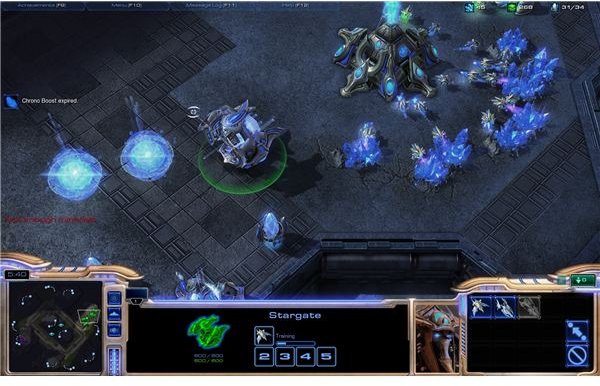
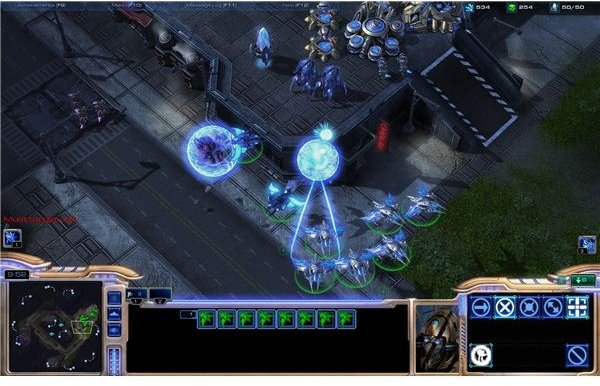
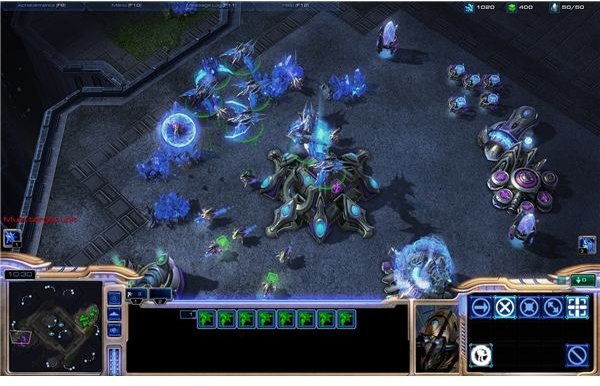
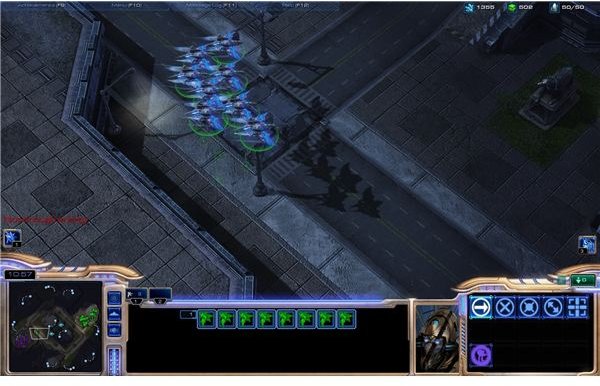
References
- Screenshots of Starcraft 2 provided by the writer
- General Protoss Strategy Guides, TeamLiquid Wikia, http://wiki.teamliquid.net/starcraft/Protoss_Strategy
- The 4 Gates Rush - TeamLiquid Wikia, http://wiki.teamliquid.net/starcraft2/4_Warpgate_Rush
- Dark Templar Rush - TeamLiquid Wikia, http://wiki.teamliquid.net/starcraft2/Dark_Templar_Rush
